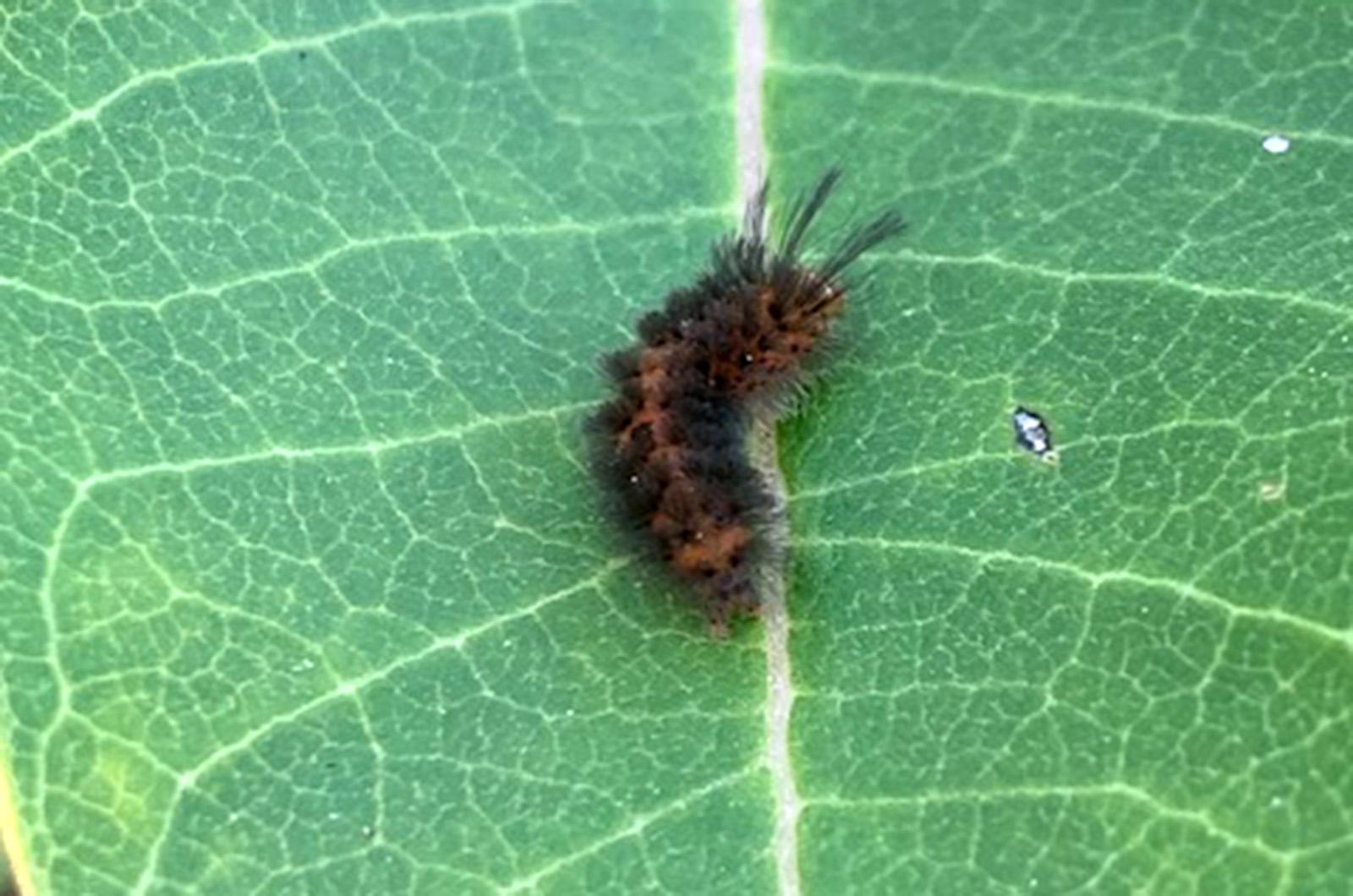Expect the unexpected.
Following this adage, it shouldn’t have been a surprise to find an unanticipated caterpillar last week. To be fair, I had seen this species once before, so it wasn’t completely out of the ordinary. Regardless of the previous sighting, it was a delight to rediscover the unexpected cycnia.
Also known as the unexpected tiger moth and the collared cycnia, the unexpected cycnia is known for its affinity to a small home range. Considered local and rare, this species is not a long-distance disperser. Instead, it spends all of its days within a several-hundred-yard radius — a true homebody. All of its life stages — its eggs, larva, cocoon and adult moth — occur in a very limited area.
This locale lover can struggle because of that stay-put proclivity. The species is listed as threatened in Massachusetts and occurs only on Cape Cod and Martha’s Vineyard, preferring our coastal scrub, dry oak barrens and native grasslands.
Because of a diversity of reasons including habitat degradation and loss, ecological succession, increase of agriculture and pastureland, and its fire sensitivity, this species is at risk in many places across its range. Most states only have a few populations and these can quickly disappear with development and land changes.
The threats come because of the unexpected cycnia’s reliance on a small homeland and a particular plant.
Of course, milkweed is what’s mandatory for the cycnia. Milkweed is important for many butterflies and moths but in the case of the cycnia, it is exclusive. Adult moths require milkweed as it is the larval plant for the caterpillars that will emerge from the eggs the moth lay on milkweed leaves. And the caterpillars only eat milkweeds.
Milkweeds provide other benefits. Consider the color of the unexpected cycnia caterpillars. With its brilliant orange skin, it can easily blend in with the orange flowers of the milkweed. Also, by eating the leaves of this plant, the caterpillars ingest its toxins that will protect it from getting eaten by predators that know of the plant’s poisonous reputation. This type of advertising is called aposematic coloring and is an effective warning.
As an adult, the moth is not colorful or a standout. With its white to gray wings that are patternless, the most interesting feature is a bright yellow streak along the edge of its forewing that matches its yellow head and abdomen.
That subtlety didn’t stop two men from claiming the discovery of this species in the mid-1800s. William Henry Edwards, an industrial pioneer specializing in coal extraction, and Asa Fitch, the first professional occupational entomologist, both believed that they were the first to discover and name this species.
The naming is where things got complicated: they both chose scientific names that led to confusion of the species. Mr. Edwards called it cycnia inopinatus, while Fitch chose cycnia collaris. Ultimately these species were seen as one and the same and Mr. Fitch’s choice — which was the earlier version — won out.
While the collared cycnia might have stood the test of time and ultimately won the name game, I will always prefer the unexpected.
Suzan Bellincampi is Islands director for Felix Neck Wildlife Sanctuary in Edgartown and the Nantucket Wildlife Sanctuaries. She is also the author of Martha’s Vineyard: A Field Guide to Island Nature and The Nature of Martha’s Vineyard.




Comments
Comment policy »